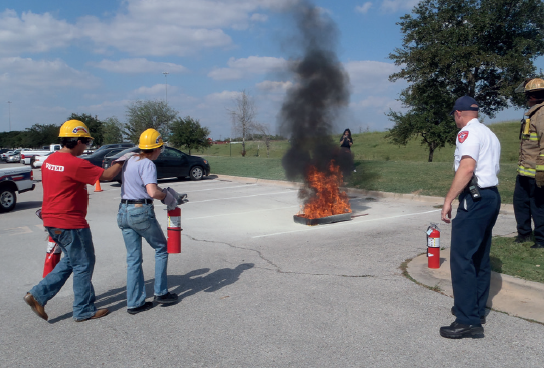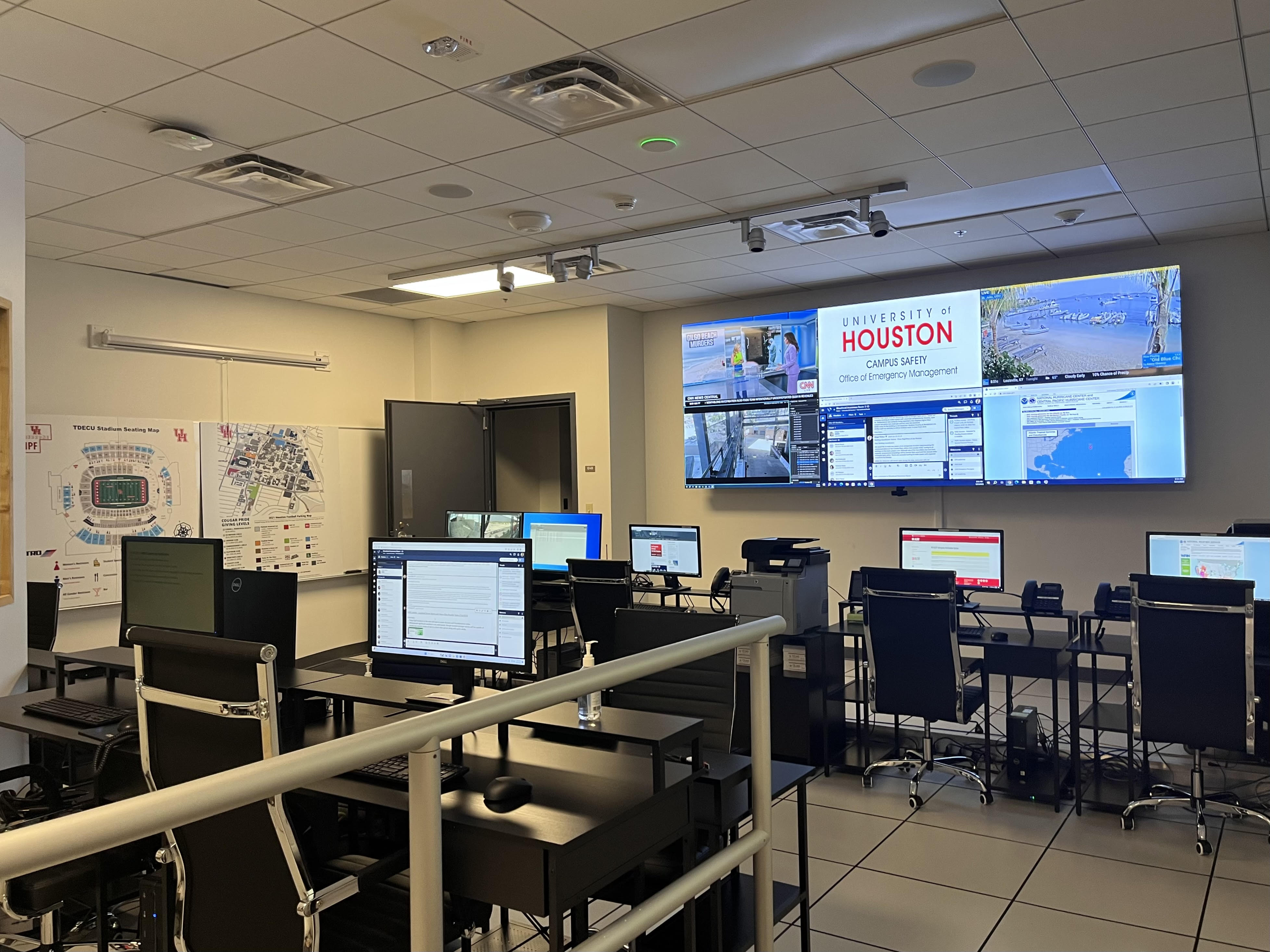
DEPARTMENTS

Environmental Health and Safety : The mission of Environmental Health and Safety (EHS) is to ensure compliance with federal, state, local regulations, as well as institutional policies and manage hazards that pose risks to people and the environment. EHS accomplishes its mission by proactively promoting an empowering campus safety culture in various disciplines including biological safety, chemical safety, radiation safety, occupational safety, environmental protection, and environmental compliance.
EHS is responsible for annually conducting over 3,000 laboratory safety inspections, testing or verifying over 2,500 units of safety equipment and conducting safety training courses to over 6,000 trainees. EHS also collects and disposes of over 400 tons of hazardous/regulated materials from campus via certified vendors. In addition to these activities, EHS conducts laboratory accident and incident investigations, ergonomic assessments, asbestos sampling, job safety analyses and reviews laboratory construction/renovation plans. When addressing compliance requirements on campus, EHS reviews and approves various research compliance applications through regulatory compliance committees as required by various federal and state agencies, and prepares various required reports to local, state and federal regulatory agencies.

Fire and Life Safety : The fire safety function was first established at the University of Houston in 1989. Since then, the Fire & Life Safety (FLS) Office has grown and now includes two areas, the fire marshal team and the food safety team. The FLS Office now handles many of the same responsibilities as a municipal fire marshal’s office and health department. The fire marshal team is responsible for conducting fire investigations, reviewing construction plans, inspecting new and existing campus buildings, inspecting and maintaining life safety systems, issuing permits, and educating the campus community on fire safety. All team members hold at least a basic inspector certification from the Texas Commission on Fire Protection, with many holding several certifications. Since UH is a state-sponsored institution, we enforce the National Fire Protection Association’s (NFPA) Life Safety Code and Fire Code.
Our food safety team issues permits, conducts health inspections, educates food service staff and students on safe food handling, and investigates foodborne illness complaints. The team follows the Texas Food Establishment Rules and USDA Food Code. Our health inspectors are certified registered sanitarians with the Texas Department of Licensing and Regulation.

Emergency Management : The Office of Emergency Management (OEM) was established at the University of Houston in 2011. The mission of the Office of Emergency Management (OEM) is to support the University of Houston’s staff, faculty and students ensuring that as a university we work together to build, sustain and improve the capability to prepare for, protect against, respond to, recover from and mitigate all hazards.
OEM is responsible for developing and maintaining the University of Houston’s campus wide emergency plans, to include the Emergency Management Plan and Continuity of Operations Plan. In an effort to implement the all hazards planning approach, the OEM also coordinates, maintains and manages the Emergency Operations Center Liaison and Ride-Out Team programs who respond during emergency events. In an effort to prepare for the next emergency, OEM also maintains the training and exercise program in order to provide emergency preparedness outreach to the campus community and to test the various University emergency plans through emergency exercises. Additionally, OEM provides numerous templates to assist its community with preparing and maintaining their own continuity of operations plans and emergency response plans. Lastly, in the event of a campus wide emergency, OEM activates the University’s Emergency Operations Center in order to assist with coordination and provide support for response efforts